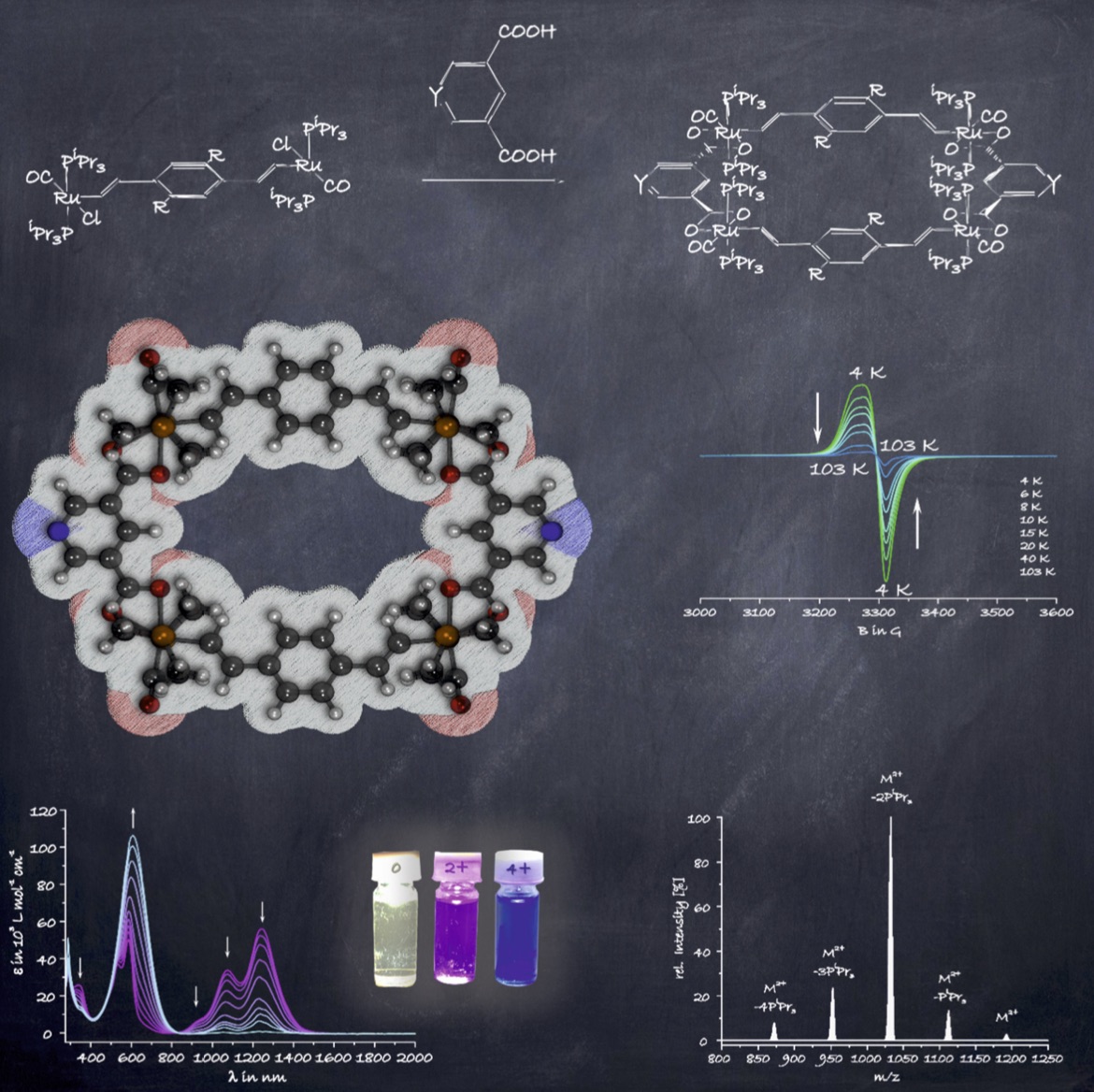
Project C13/C14 - Chem. Eur. Journal
Redox-Active Tetraruthenium Macrocycles Built from 1,4-Divinylphenylene-Bridged Diruthenium Complexes
Metallamacrocylic tetraruthenium complexes were generated by treatment of 1,4-divinylphenylene-bridged diruthenium complexes with functionalized 1,3-benzene dicarboxylic acids and characterized by HR ESI-MS and multinuclear NMR spectroscopy. Every divinylphenylene diruthenium subunit is oxidized in two consecutive one-electron steps with half-wave potential splittings in the range of 250 to 330 mV.
Additional, smaller redox-splittings between the +/2+ and 0/+ and the 3+/4+ and 2+/3+ redox processes, corresponding to the first and the second oxidations of every divinylphenylene diruthenium entity, are due to electrostatic effects. The lack of electronic coupling through bond or through space is explained by the nodal properties of the relevant molecular orbitals and the lateral side-by-side arrangement of the divinylphenylene linkers. The polyelectrochromic behavior of the divinylphenylene diruthenium precursors is retained and even amplified in these metallamacrocyclic structures. EPR studies down to T=4 K indicate that the dications 1-H2+ and 1-OBu2+ are paramagnetic. The dications and the tetracation of macrocycle 3-H display intense (dications) or weak (3-H4+) EPR signals. Quantum chemical calculations indicate that the four most stable conformers of the macrocycles are largely devoid of strain. Bond parameters, energies as well as charge and spin density distributions of model macrocycle 5-HMe were calculated for the different charge and spin states.
S. Scheer, M. Linseis, E. Wuttke, S. Weickert, M. Drescher, O. Tröppner, I. Ivanovic-Burmazovic, A. Irmler, F. Pauly, R.F. Winter
Chem. Eur. J. 22, 9574-9590 (2016)
DOI: 10.1002/chem.201601384
